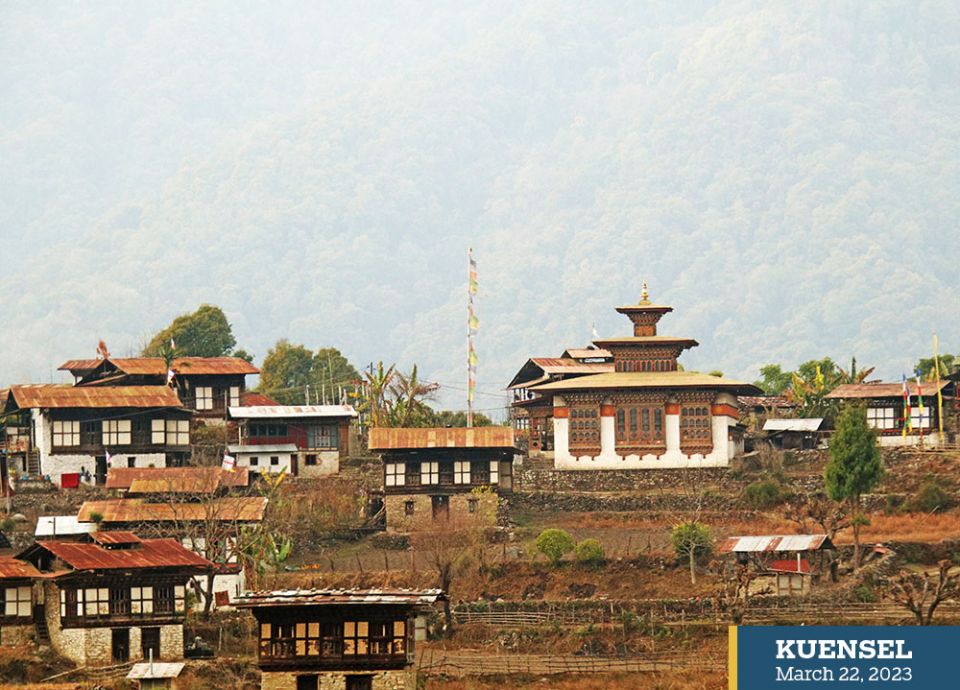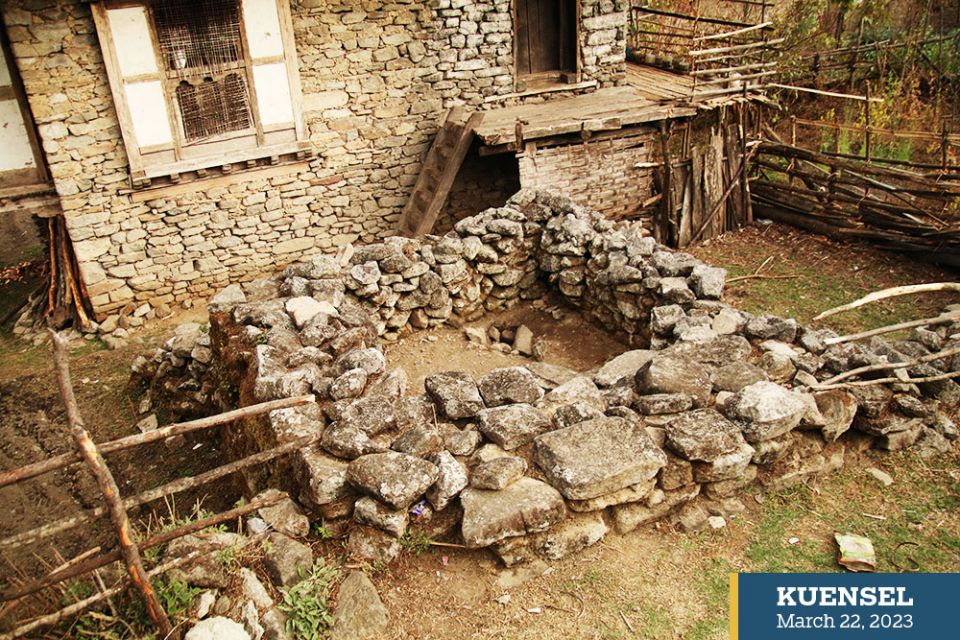
Located at an elevation of 1,600 metres east of Zhemang town, Kheng Buli exudes charm to enthrall visitors with its legend and history.
Buli is known for Buli Tsho, home to Buli Menmo (the mermaid). But what lies beyond the mermaid and Buli’s powerful chieftain is visit by Bhutan’s famous treasure revealer, Pema Lingpa.
No one knows for sure when and why Terton Pema Lingpa visited Buli. Stories have been, however, passed from one generation to another.
In Buli today, there is Peling Lhakhang constructed by the villagers centuries ago in remembrance of the terton. It is said that Pema Lingpa visited Buli twice, in 1478 and 1497 AD.
Pema Singye, 68, a former local leader, said that he heard about this from village elders.
“I was told that my great-great-grandmother offered tea to Pema Lingpa during his visit to Buli,” he said.
A few metres away from Pema Singye’s maternal house is Pema Lingpa’s forge. It is said that Guru Rinpoche visited the forge while Pema Lingpa was at work.

Pema Lingpa’s forge in Buli
During the third month of the lunar calendar, an old woman saw a man a few metres below her house gathering stones to build a foundation to raise a shack. The man emanated a special aura.
She took tea and went to greet the man.
When the woman walked into the shack, Pema Lingpa is said to have nodded and continued with his metalwork; just as the woman was about to leave, the terton caught a glimpse of a robe near the door. Before he could recognise what was at the door, it vanished.
When Pema Lingpa asked if the woman had seen anything, she said she did not.
Later that night, it is said that Guru Rinpoche visited Pema Lingpa in his dreams and took him to Guru’s Zangtok Pelri, Copper-Coloured Mountain of Glory.
Today, one can find in Buli a choeten constructed on Pema Lingpa’s degor range. There are also the remains of his forge’s foundation.
The locals said that although the terton did not leave anything behind, his metalworks were kept inside a cliff facing the village.
Peling Lhakhang has a mural depicting the Bulipas receiving Pema Lingpa with tshogchang (a traditional way of receiving guests by local communities).
Pema Singye said that some lamas and khengpos argue that this did not occur or is not mentioned in Peling Ka Bum.
The people Buli, however, remain proud of its history.
The Peling Lhakhang is taken care of today and locals give tours to anyone who wishes to know more about Buli.












